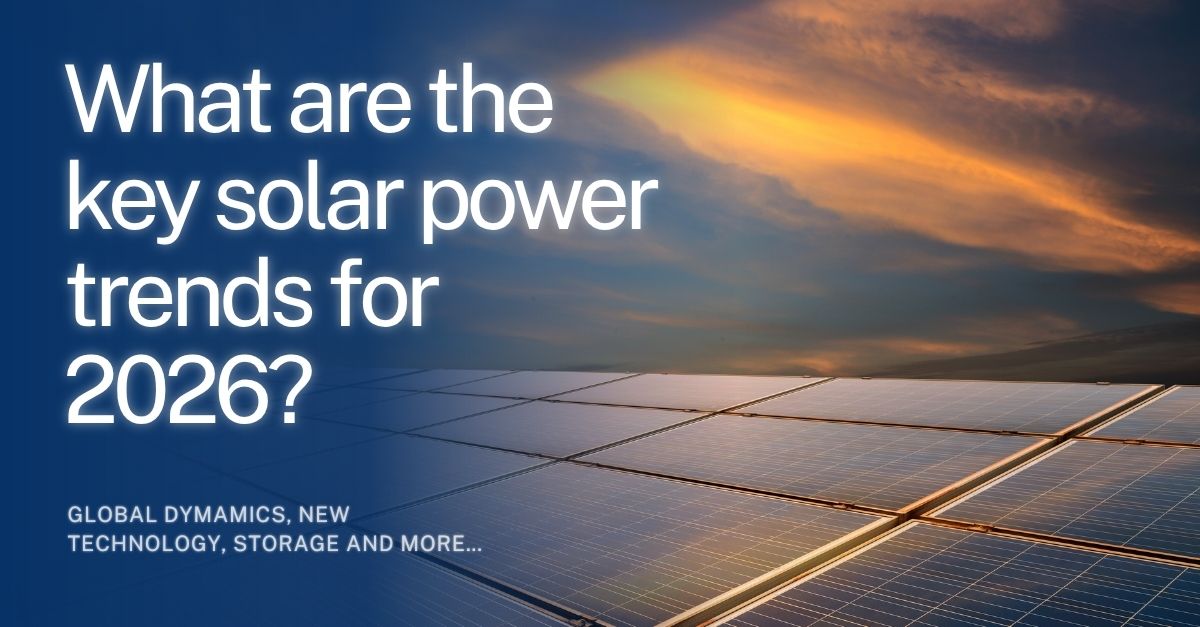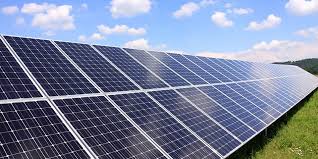The solar power sector in 2026 will blend technological breakthroughs with changes in global market dynamics and policy frameworks. While the industry faces short-term challenges, including a pause in installation growth due to policy adjustments and cost increases, technological innovation is keeping the sector on a strong upward trajectory. Key trends for 2026 include advances in panel efficiency, new applications and system designs, as well as the growth of smart energy management and storage solutions.
Changing global market dynamics
While we saw some exciting 2025 developments in the sector, the global solar market, having experienced years of rapid double-digit growth, is set for a temporary slowdown in 2026. This is largely attributed to regulatory and incentive changes in major markets like China and the United States.
In the US, solar installation rates may plateau due to the phase-out of significant federal tax credits and evolving domestic content requirements, while similar recalibrations in China are expected to result in a short-lived stagnation in global PV deployment. Despite these headwinds, investment remains robust in regions with stable policy support, especially North America and Europe, where enhancements in grid infrastructure and local manufacturing continue to drive long-term expansion.
The UK solar market, however, is likely to continue seeing robust growth in 2026, driven by ambitious government targets to more than double national installed capacity by 2030 and a boom in both residential rooftop and large-scale corporate-backed projects. Strong policy support, grid reforms, falling costs and the rise of corporate power purchase requirements are accelerating deployment.
New solar cell technology for 2026
2026 will be an important year for solar cell innovation, with several key technologies moving from laboratories to commercial reality:
- Perovskite-Silicon Tandem Cells: By the end of 2026, we are likely to see the first scalable perovskite-silicon tandem solar panels enter the market. These panels can convert up to 33% of sunlight into electricity, far surpassing the current industry average of about 20% efficiency. Although durability remains a challenge, this technology is becoming more resilient to heat and humidity, accelerating commercial readiness. These panels are particularly appealing for space-constrained applications, such as urban rooftops and building-integrated systems.
- TOPCon: Tunnel oxide passivated contact (TOPCon) technology is becoming the new industry standard, expected to account for over 70% of the global market by 2026. It offers greater efficiency and reliability compared to traditional PERC panels.
- Back-Contact Panels: which move wiring from the panel’s front for cleaner looks and improved sunlight capture, are also increasingly popular.
- Transparent solar panels for windows and building-integrated photovoltaics (BIPV): are another new technology that is changing how buildings harness solar energy. This enables power generation directly from glass surfaces and architectural elements without sacrificing aesthetics or functionality.
More options for deploying solar
Technological advances are providing additional application options for solar, including:
- Bifacial (Two-Sided) panels: Bifacial modules can capture light from both sides, improving energy yields by 5-10% in real-world conditions and up to 30% in optimal installations.
- Floating solar farms: Photovoltaic arrays installed on lakes, reservoirs, or ponds are expected to reach 4.8 GW of global capacity in 2026. Floating solar delivers added benefits such as higher efficiency (water cooling) and reduced water evaporation, addressing both energy and environmental needs.
- Building-Integrated Photovoltaics (BIPV): As mentioned above, BIPVs are a flexible technology that enable installation as part of the building’s design.
Smart solar and storage
Artificial intelligence and grid connectivity are now central to maximising solar value. AI-powered systems enable real-time optimisation of energy production and storage, while advanced inverters and batteries enhance grid stability and backup power solutions. Residential and commercial users are increasingly looking at solar-plus-storage systems to protect against grid fluctuations and price volatility, a trend likely to strengthen as storage technology further improves and electrification accelerates.
Regional and segment-specific trends
Policy-driven markets in North America and Europe remain growth leaders, supported by aggressive decarbonisation goals, updated grid policies and continued investment in renewable infrastructure. In the US, despite some political headwinds, solar generation is projected to increase by 19% in summer 2026, becoming the leading source of renewable electricity during peak periods. Meanwhile, emerging economies in Latin America and Asia-Pacific are accelerating investments in utility-scale solar parks, diversifying the global growth profile of the industry.
While 2026 may see a brief plateau in global solar market growth due in large part to shifting policy and economic landscapes, technology developments and the demand for greener energy solutions will continue to drive the industry forward.
FAQs
What are the most promising energy storage technologies emerging alongside solar in 2026?
Solid-state batteries and iron-air storage systems are gaining traction due to longer lifespan, lower costs, and improved safety. These technologies are making solar-plus-storage systems more viable at both residential and grid scales.
How is AI being used in commercial solar energy systems in 2026?
AI is enabling predictive maintenance, energy yield forecasting, and real-time optimisation of energy flow between solar arrays, storage, and the grid – reducing downtime and boosting return on investment.
What role does solar play in UK corporate sustainability strategies in 2026?
Corporations are turning to on-site solar and corporate power purchase agreements (PPAs) to meet decarbonisation targets, cut energy costs, and gain ESG credibility. Demand is surging for large-scale rooftop and BIPV systems.
How are smart grids evolving to support solar in 2026?
Grids are becoming more decentralised and interactive, with dynamic load balancing, demand response, and bi-directional energy flows. This shift is essential to integrate variable solar power effectively.
What are the challenges facing floating solar deployment in the UK?
Regulatory uncertainty, ecological impact concerns, and grid access limitations remain barriers. However, interest is rising due to land scarcity and the efficiency benefits of water-based installations.







